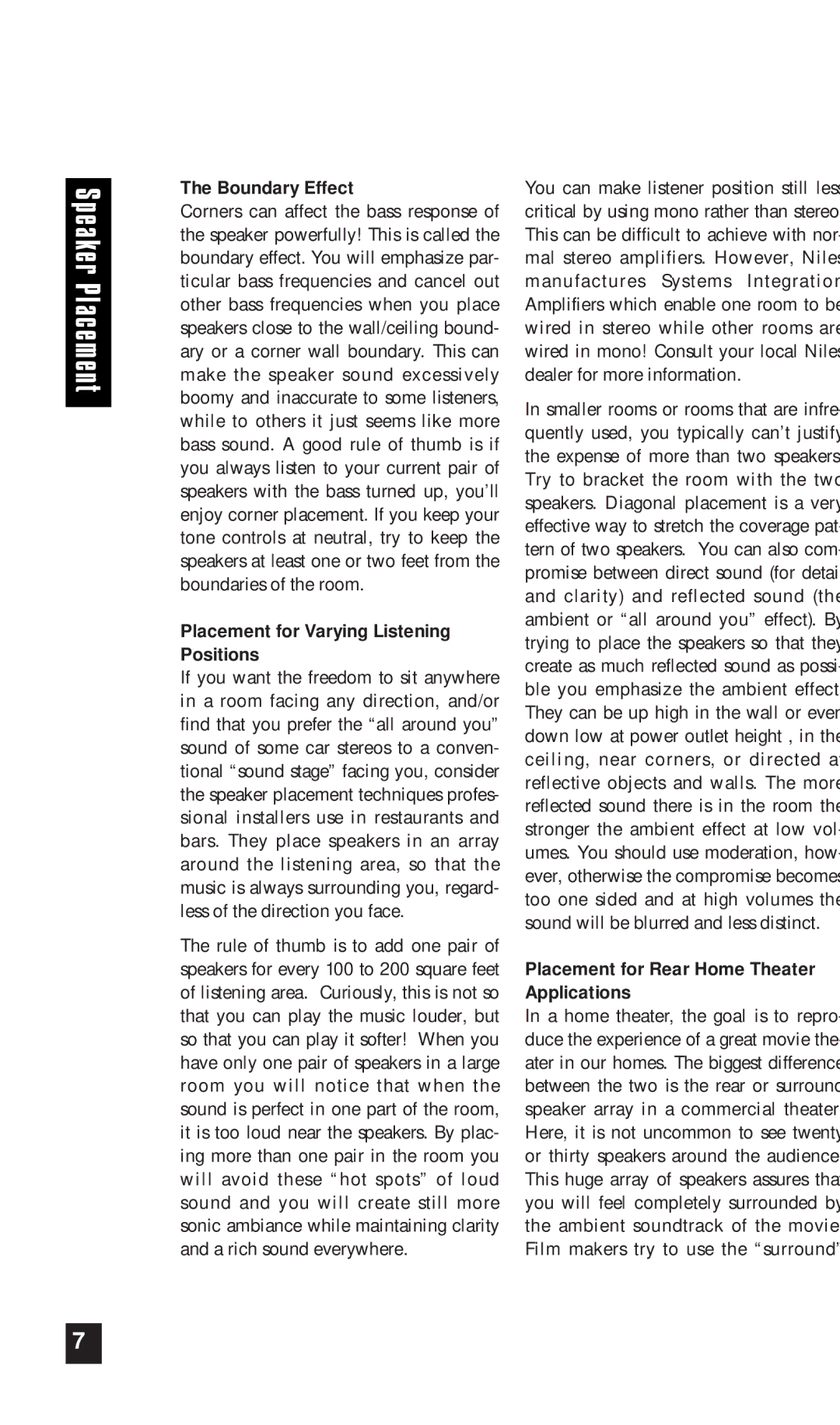
Speaker Placement
The Boundary Effect
Corners can affect the bass response of the speaker powerfully! This is called the boundary effect. You will emphasize par- ticular bass frequencies and cancel out other bass frequencies when you place speakers close to the wall/ceiling bound- ary or a corner wall boundary. This can make the speaker sound excessively boomy and inaccurate to some listeners, while to others it just seems like more bass sound. A good rule of thumb is if you always listen to your current pair of speakers with the bass turned up, you’ll enjoy corner placement. If you keep your tone controls at neutral, try to keep the speakers at least one or two feet from the boundaries of the room.
Placement for Varying Listening Positions
If you want the freedom to sit anywhere in a room facing any direction, and/or find that you prefer the “all around you” sound of some car stereos to a conven- tional “sound stage” facing you, consider the speaker placement techniques profes- sional installers use in restaurants and bars. They place speakers in an array around the listening area, so that the music is always surrounding you, regard- less of the direction you face.
The rule of thumb is to add one pair of speakers for every 100 to 200 square feet of listening area. Curiously, this is not so that you can play the music louder, but so that you can play it softer! When you have only one pair of speakers in a large room you will notice that when the sound is perfect in one part of the room, it is too loud near the speakers. By plac- ing more than one pair in the room you will avoid these “hot spots” of loud sound and you will create still more sonic ambiance while maintaining clarity and a rich sound everywhere.
You can make listener position still less critical by using mono rather than stereo This can be difficult to achieve with nor- mal stereo amplifiers. However, Niles manufactures Systems Integration Amplifiers which enable one room to be wired in stereo while other rooms are wired in mono! Consult your local Niles dealer for more information.
In smaller rooms or rooms that are infre- quently used, you typically can’t justify the expense of more than two speakers Try to bracket the room with the two speakers. Diagonal placement is a very effective way to stretch the coverage pat- tern of two speakers. You can also com- promise between direct sound (for detai and clarity) and reflected sound (the ambient or “all around you” effect). By trying to place the speakers so that they create as much reflected sound as possi- ble you emphasize the ambient effect They can be up high in the wall or even down low at power outlet height , in the ceiling, near corners, or directed a reflective objects and walls. The more reflected sound there is in the room the stronger the ambient effect at low vol- umes. You should use moderation, how- ever, otherwise the compromise becomes too one sided and at high volumes the sound will be blurred and less distinct.
Placement for Rear Home Theater Applications
In a home theater, the goal is to repro- duce the experience of a great movie the- ater in our homes. The biggest difference between the two is the rear or surround speaker array in a commercial theater Here, it is not uncommon to see twenty or thirty speakers around the audience This huge array of speakers assures tha you will feel completely surrounded by the ambient soundtrack of the movie Film makers try to use the “surround”
7
